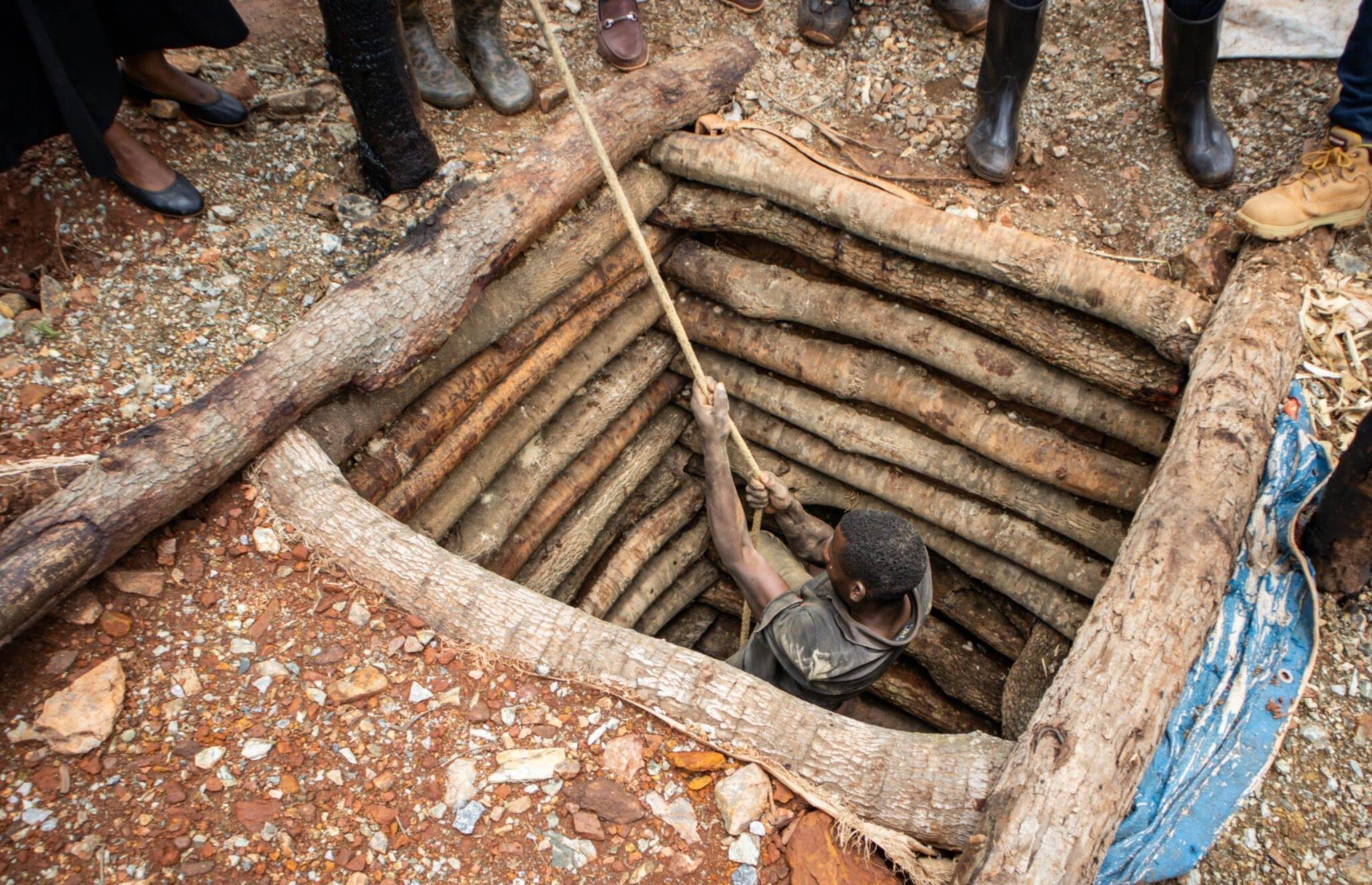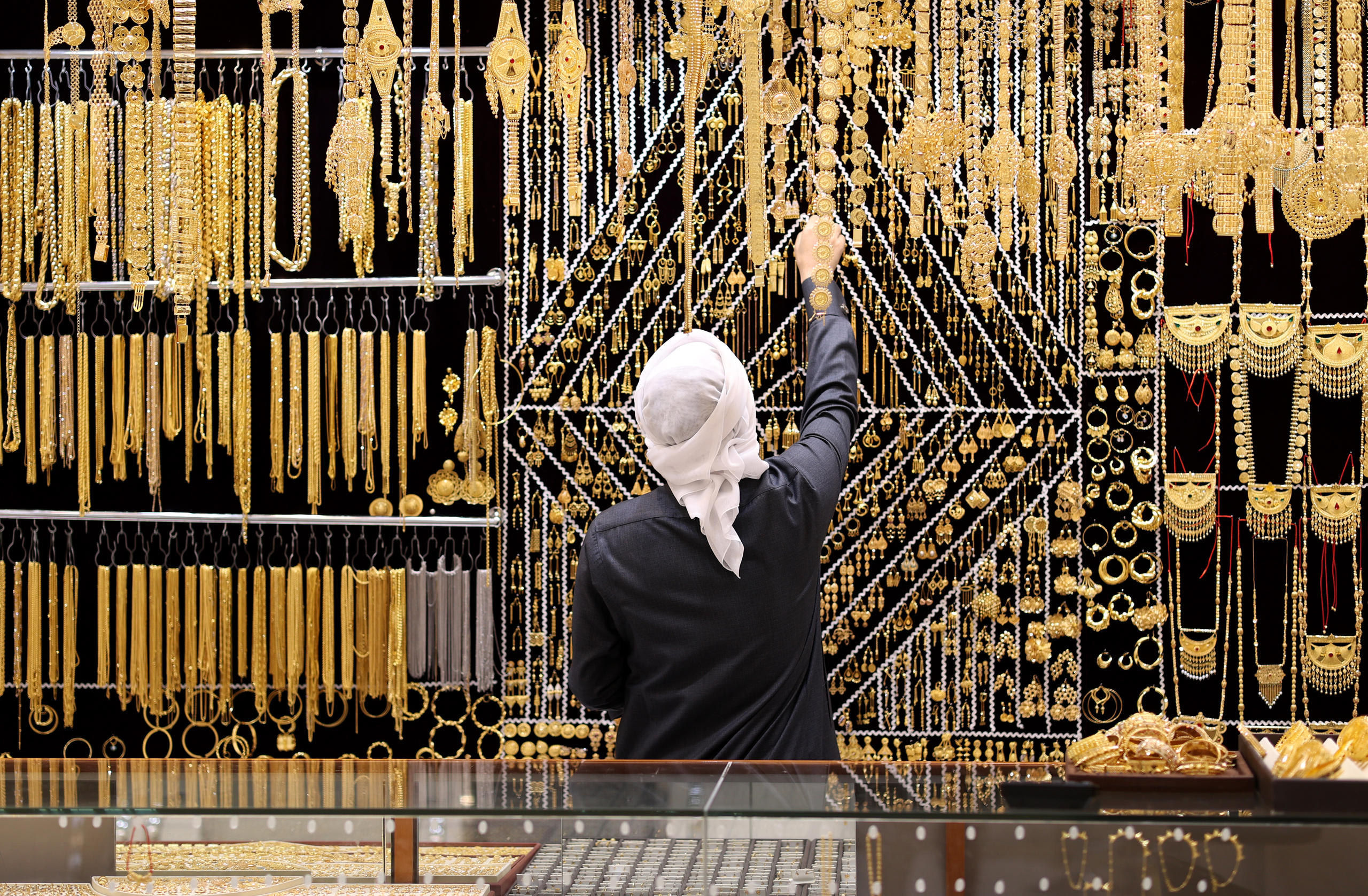Hidden wealth: Swiss NGO maps Africa’s undeclared gold flows

Africa is experiencing a gold rush. Yet, the glittering wealth produced by artisanal and small-scale mining (ASM) largely remains in the shadows. A whopping 321 to 474 tonnes of gold, worth between $23.7 billion (CHF21.6 billion) and $35 billion at current gold prices, are not declared each year, according to estimates presented in a ground-breaking report by the NGO Swissaid.
“There is a lot more that needs to be done to formalise the sector and make sure that African states get a revenue from the trade of this gold,” notes Yvan Schulz, Swissaid raw materials researcher and co-author of the study that combed through the continent’s gold production and trade data country by country. Switzerland is the second largest importer of African gold after the UAE.
In 2022, Africa produced between 991 and 1,144 tonnes of gold, with over half of this coming from artisanal mines. However, a significant amount of ASM gold is not officially recorded in production and trade data. That same year, more than 435 tonnes of gold were smuggled out of Africa, which represents more than a tonne a day, according to the report.
Do you want to read our weekly top stories? Subscribe here.
Nine countries across the continent see over 20 tonnes of ASM gold go undeclared annually. In 41 out of 54 African nations, ASM gold production exceeds 100kg per year, yet 15 countries fail to report any production at all, the report noted. This hidden treasure accounts for up to 80% of ASM gold production and nearly 41% of Africa’s total gold output.
The shadow economy robs African nations of tax revenues that could be invested in development. Schulz says, “We are talking about hundreds of millions of dollars for the whole continent that would be available for all kinds of public services including health and education.”
One of the factors for not declaring gold for export is a very high export tax. “Some of these export taxes are not realistic,” he notes. “If you ask dealers to pay a 15% export tax you can be almost certain that this gold is not going to be declared. One of our recommendations to African states is that they should harmonize their tax regimes.”
In other countries, state administration is not keeping up with the scale of the trade. While not a focus of the report, which is based on desk research, state administration and corruption are also part of the problem. “In some countries it’s absolutely clear that the elite have a role to play in the trade of undeclared gold,” says Schulz. “They control the whole trade, nothing gets done without their approval. That’s a form of corruption.”
UAE – golden gateway
Much of the undeclared gold from the African continent finds its way into international markets through clandestine routes, particularly to the United Arab Emirates (UAE). Here, the gold gains legal status, blurring the lines between illicit and legitimate trade. Comparison of import data by Swissaid reveals that Africa’s undeclared ASM gold production could reach the upper estimate of 474 tonnes. The gold smuggled out in 2022 (435 tonnes) corresponds to a value of $30.7 billion at current gold prices (May 1, 2024).
“Gold smuggling in Africa more than doubled between 2012 and 2022,” noted Adam Anthony, chairperson of the African steering Committee of Publish What You Pay (PWYP), in reaction to the Swissaid findings, which were first presented at an OECD summit on responsible mineral supply chains this month. “Let me put things into perspective: $30 billion a year is equivalent to two times the GDP of Rwanda and the foreign reserves of Tanzania for the next six months.”
The UAE is a major gold hub and a popular destination for gold smugglers. According to the report, around 66.5% of its gold imports from Africa in 2022 were sourced through smuggling. Between 2012 and 2022, 2,569 tonnes of African gold entered the UAE without being declared for export, representing a value of $115.3 billion.
The UAE has taken widely recognised steps to tighten regulations on the gold sector in the past couple of years. However, its absence was noted at recent international events focused on responsible gold sourcing, including the OECD event this month and a similarly themed gathering of gold industry actors convened by the London Bullion Market Association in London in March.
Swiss links
Switzerland also plays a crucial role in the gold trade network. Alongside the UAE and India, it is one of the top three importers of African gold. From 2012 to 2022, nearly 80% of African gold exports were destined for these three nations. Swiss direct gold imports from Africa increased from 158 tonnes in 2012 to 246 tonnes in 2022, the report noted.
Switzerland, South Africa, and India all purchase industrial gold from the African continent. The UAE stands out as the main destination for ASM gold, receiving 80 to 85% of these exports, according to the same source. South Africa also plays a significant role in intra-African gold trade, being the key destination country for declared gold shipments within the continent.
The report highlights that even though Switzerland currently shuns ASM gold from Africa, it is possible for gold from Africa to enter the Swiss market via the UAE. “Switzerland is not directly sourcing ASM gold from Africa, but Switzerland is sourcing a lot of gold from the UAE,” points out Schulz. “Part of that gold very likely comes from Africa and from Africa ASM. So there’s a high risk that Switzerland might actually be sourcing a lot of ASM gold from Africa indirectly.”
The data dilemmas
The reliability of data on Africa’s gold sector is a major issue. Numerous studies have examined illicit gold flows in Africa, emphasising strong commercial links with the UAE. These investigations used “mirror data analysis” to uncover mismatches in export and import figures.
A 2020 UNCTAD report estimated illicit financial flows in Africa’s extractive sector at $40 billion in 2015, with gold making up a significant portion. A Reuters’ 2019 analysis found discrepancies in reported gold exports from 46 African countries to the UAE, revealing a $7.4 billion gap. Bloomberg’s 2021 study identified a $4 billion gap in 2020’s gold trade data between Africa and the UAE. These investigations used “mirror data analysis” to uncover mismatches in export and import figures.
Swissaid explains it also employed mirror data analysis, addressing its limitations by considering factors like differing trade systems, misclassification of tariff codes, and variations in trade value reporting. By cross-checking national customs statistics and trade data, among other sources, Swissaid aimed for accuracy. The study required research and interviews with actors across the global gold industry to round out the information.
Marcena Hunter, director of the Extractives at the Global Initiative Against Transnational Organized Crime, commended the report and said it aligned with studies done by her organisation. “It is a really great exploration of the data both in terms of its limitations and what can be done with it,” she said during a panel discussion at the Organisation for Economic Co-operation and Development in Paris.
Source of livelihood, conflict fuel
Artisanal mining, while a significant source of livelihood, often involves harsh working conditions and significant environmental impact. Mercury use in gold extraction poses severe health risks to miners and nearby communities. Deforestation and land degradation further compound the environmental toll. Illicit gold flows are also linked to corruption and conflict financing.
“The gold sector has historically been demonised and we need do need think about the livelihood issues,” Hunter said during the OECD discussion. “That being said, we know that gold certainly contributes to conflict financing in multiple African countries, including the CAR [Central African Republic], DRC [Democraatic Republic of Congo], Sudan, amongst others. We know what violent extremist groups in the Sahel profit from the gold sector.”
Experts concur that there is a lot more to be done to formalise the gold sector and make sure that African states get revenue from the trade of this gold. While gold is evidently a resource curse, Anthony of PWYP highlighted the tremendous potential of the ASM gold sector considering how much ASM miners were able to produce off the books with little state support or investment.
“We walk a thin line between denouncing the problems that are there in this sector but we also don’t want to stigmatism the miners in the ASM sector because we are fully aware that they need this source of livelihood,” Schulz told SWI. “The miners have little impact on how the trade is done.”
Special responsibility
Efforts between African governments, international bodies, and private sectors are needed for ASM gold mining to be a boon, according to experts. Implementing stricter regulations, improving data collection steps, and fostering sustainable mining practices are all seen as key for an equitable and transparent global gold industry.
The Swiss Agency for Development and Cooperation helped fund the Swissaid report. The latter argues that as a major player in the global gold trade, Switzerland has a special responsibility to ensure its imports are ethically sourced.
“State authorities so far have not done much to produce more transparency and they should really do it,” he said. “By creating stricter regulation and more transparency in the gold sector, we can really improve the lives of those miners and their families and populations in African countries.”
Edited by Virginie Mangin
Corrected on May 30, 2024 to fix a mismatched gold amount and currency conversion.

In compliance with the JTI standards
More: SWI swissinfo.ch certified by the Journalism Trust Initiative














You can find an overview of ongoing debates with our journalists here . Please join us!
If you want to start a conversation about a topic raised in this article or want to report factual errors, email us at english@swissinfo.ch.